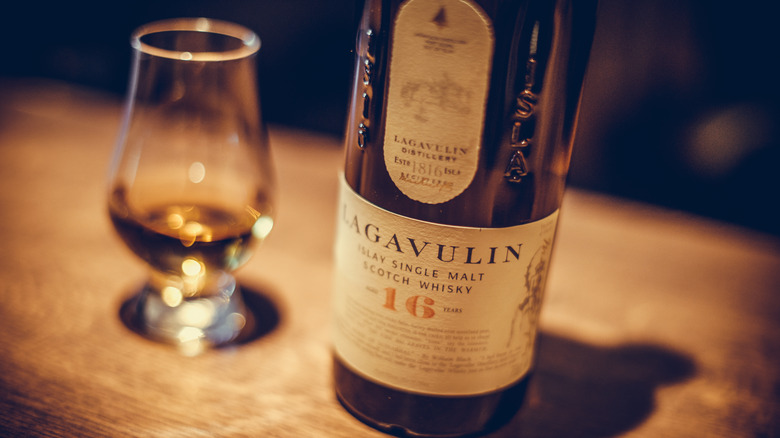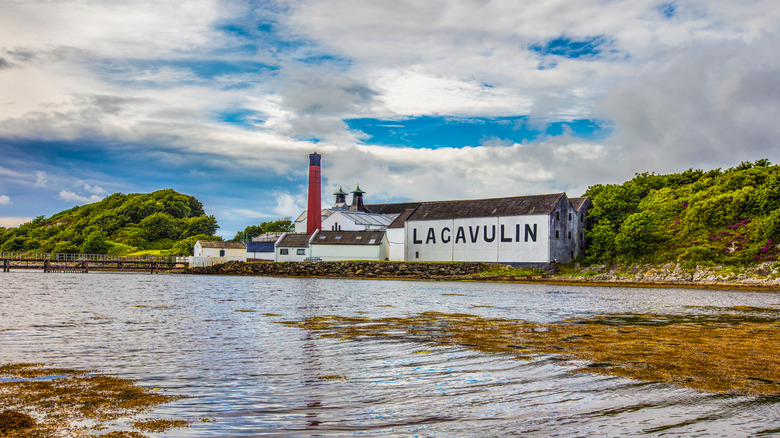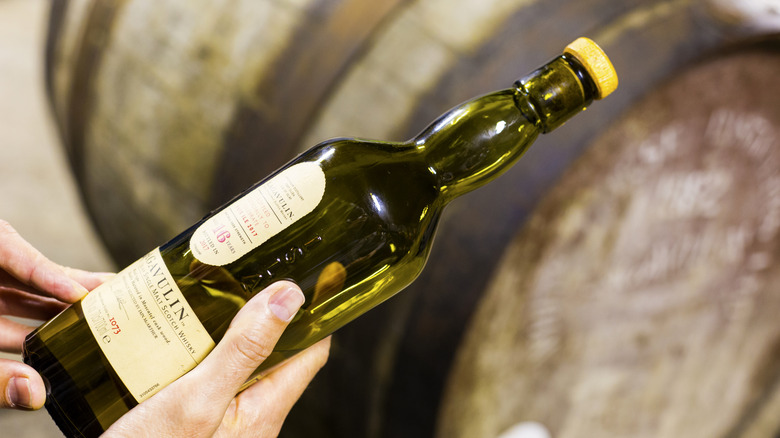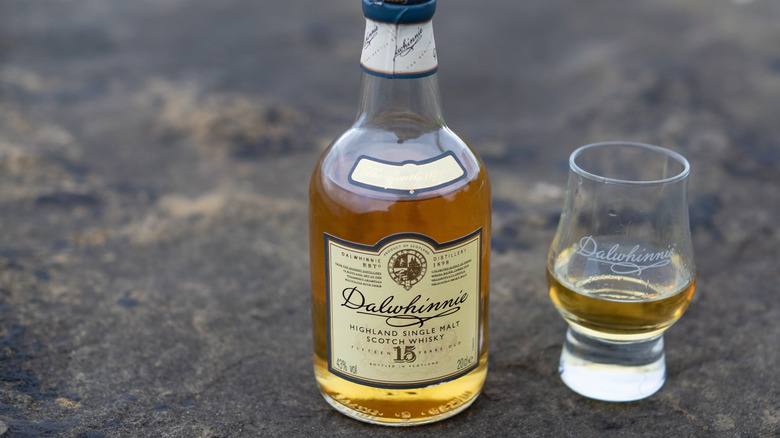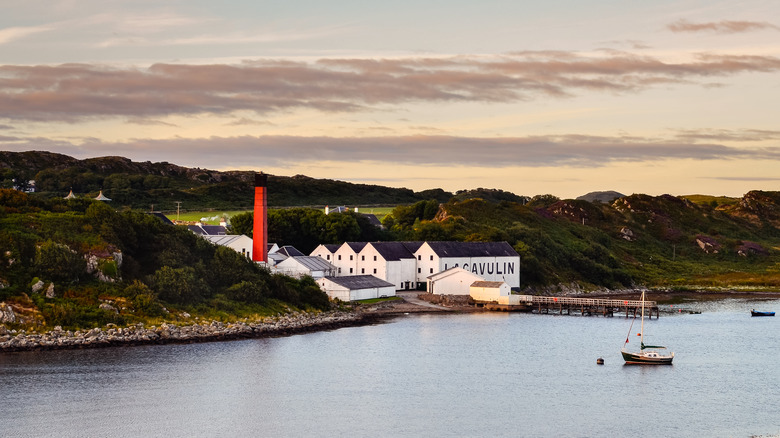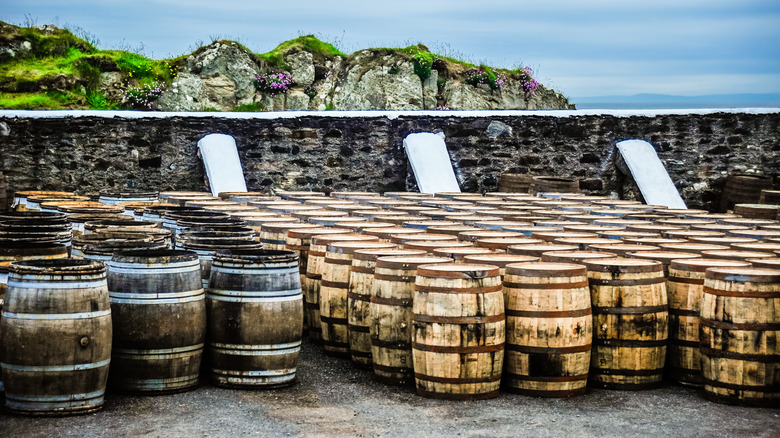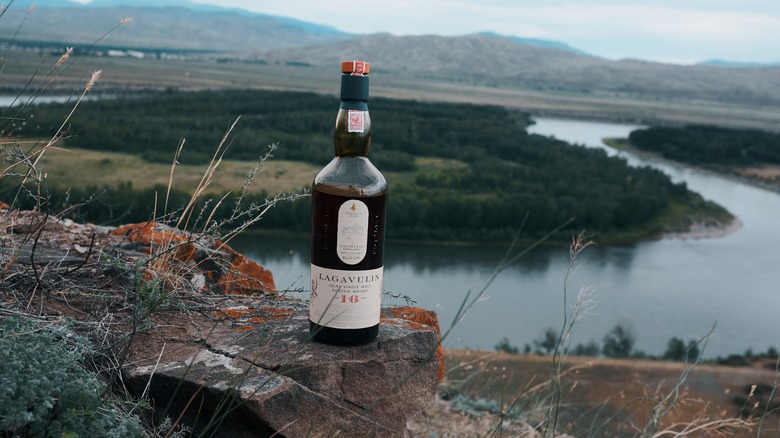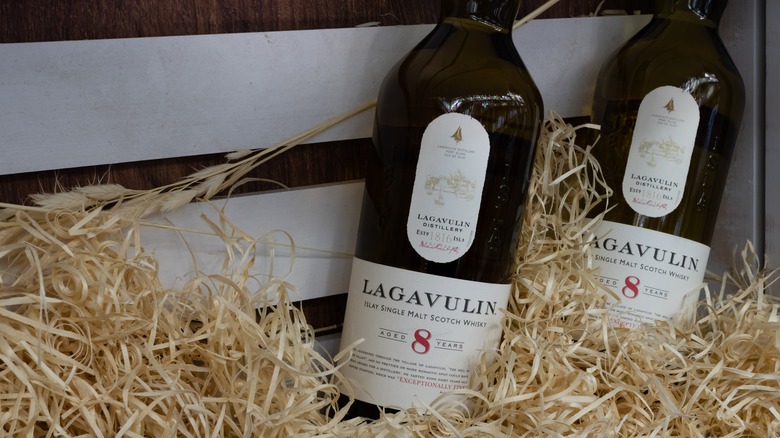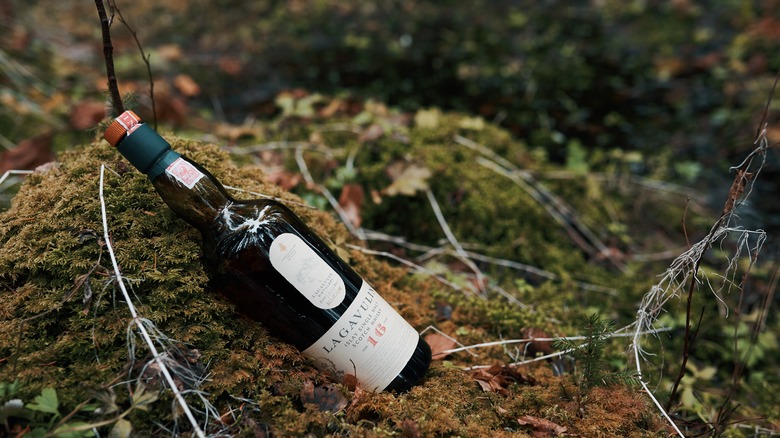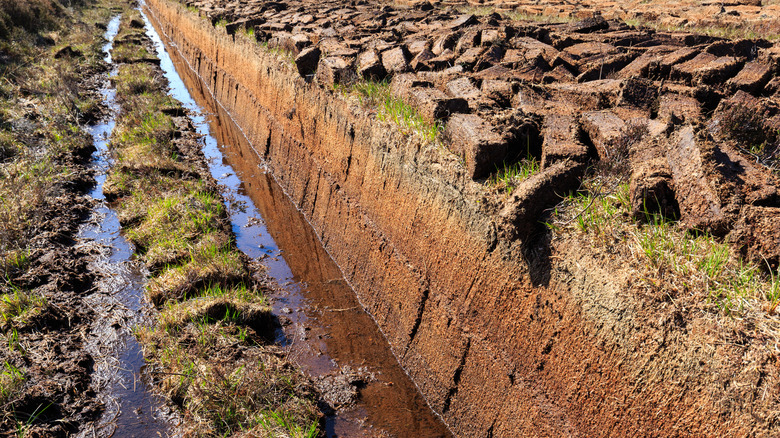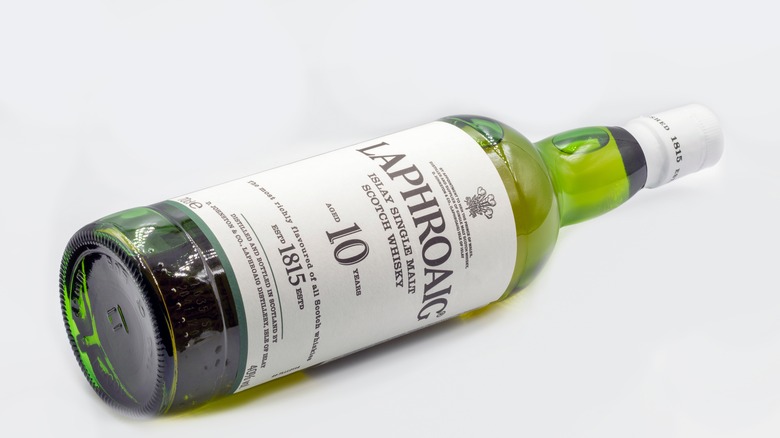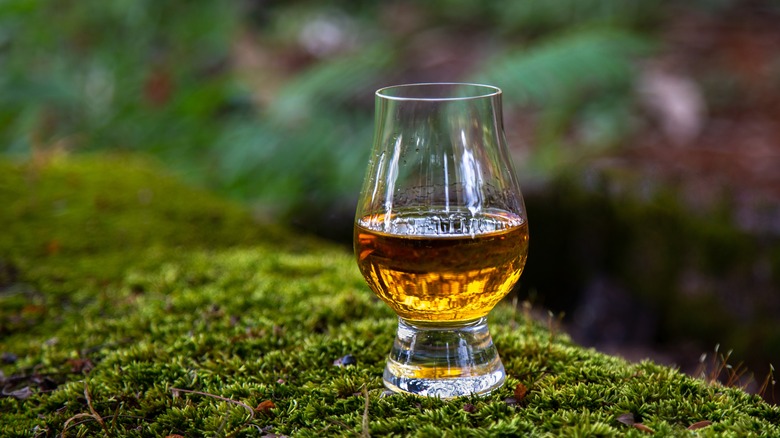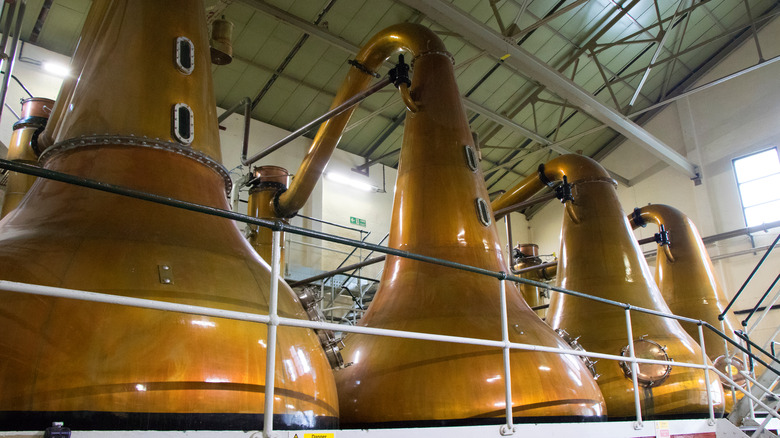Lagavulin 16 Year Scotch: The Ultimate Bottle Guide
Lagavulin is one of Scotland's many renowned whisky distilleries, and perhaps its most iconic scotch is the Lagavulin 16-year. Their flagship bottle since 1988, its reputation was rapidly established by praise over its quality. Made on the island of Islay, off the western coast of Scotland, the whisky is beloved for its peaty flavor and deep complexity. The Lagavulin 16-year is perhaps the best example of what Islay has to offer, and it has been delighting whisky lovers for over 30 years.
Behind Lagavulin itself is a captivating history, one dating all the way back to the 1700s. For centuries, the unique geography of the land has been harnessed to make a unique scotch whisky that boasts a vastly different taste profile from what could be found on the mainland. These days, Lagavulin 16-year not only stands as a flag-bearer for Islay, but it proudly showcases a rich tapestry of scotch whisky with which many people can't help falling in love.
The history of Lagavulin
There aren't many older or more popular distilleries in Scotland than Lagavulin. Officially opened in 1816, its history goes even further back than that. As early as 1742, the site upon which Lagavulin now stands was used to illegally make whisky. Its remote location made it a particularly great spot to manufacture illicit spirits, but soon those small distilleries would become legitimate, and merge into one large Lagavulin distillery.
The first owner was a man by the name of John Johnstone, but it was J.L. Mackie and latterly his nephew Peter J. Mackie who would oversee the rapid growth of the distillery, placing it on the road to becoming the respected institution it is today.
The reign of Mackie & Co would last from 1867 to 1924, overseeing a huge number of challenges. The distillery was then briefly in the hands of White Horse Distillers, with Distillers Company Limited subsequently running the site from 1927 to 1986, and then United Distillers until 1997. It was under United Distillers that the distillery decided to make Lagavulin 16-year their flagship bottle, and it has remained so ever since. United Distillers was owned by Guinness and in 1997, Guinness merged with Grand Metropolitan to create Diageo, today a huge multinational beverage company, and still the owner of Lagavulin.
How Lagavulin 16-year is made
With Lagavulin now owned by a huge multinational company, there came a fear the distillery may change to become more commercial. But that hasn't become an issue with Lagavulin, or any other of Diageo's brands. Lagavulin continues to make their whisky with a huge amount of discipline and patience, boasting a fermentation time of at least 55 hours.
That patience isn't just shown in the fermentation, but also the distillation stage of production, which is the slowest of all Islay whiskies. The first run is for five hours, and the second almost double that time. It ensures that none of Lagavulin's famous peaty taste is lost. That is also helped along by the distillery keeping their pot stills at a minimum 95 percent capacity, encouraging minimal contact with the copper.
Not content with simply burning peat to get that smoky flavor, the taste of this single malt scotch whisky also comes from the water. The distillery is served from nearby Lochan Sholum, and the water that runs into the distillery travels through its peat-covered hillside. This gives the whisky a peaty taste before the barley has even been dried by peat smoke. It gives Lagavulin (along with its neighbors Laphroaig and Ardbeg) a smokiness unmatched by mainland whiskies.
Founding whisky of the Classic Malts of Scotland
In 1988, Diageo (then under the name of United Distillers) thought it would be a great idea to market six of the best scotches they owned. Dubbed the Classic Malts of Scotland, these six whiskies were designed to showcase how Scottish whiskies can differ between their regions. Diageo owns 26 single malt scotch whisky brands, along with nine blended brands. However, just half a dozen were chosen to be the best examples of what Scotland had to offer, and it's hard to argue with their picks.
While intended to display the differing styles of Scottish whiskies, they weren't marketed under the most commonly accepted whisky regions. For example, both Dalwhinnie and Oban are Highland whiskies but Oban was given the distinction of being a "West Highland" whisky to differentiate the two. Along with Dalwhinnie 15-year and Oban 14-year, the other whiskies chosen (aside from Lagavulin) were Glenkinchie 10-year (Lowland), Cragganmore 12-year (Speyside) and Talisker 10-year (Skye).
While essentially a clever marketing campaign, the Classic Malts of Scotland became a respected selection of whiskies. For those who want to sample the different flavor profiles scotches can have, these six whiskies are a great place to start. There is a good chance that one of these will become a new favorite drink; for those who love the taste of peated whiskies, that favorite could very well become the Lagavulin 16-year.
Complicated history with Ardmore and Laphroaig
One of the many appeals of whisky is a long, complicated history. There has been a distillery on the site of Lagavulin for well over 250 years; take a sip of their 16-year-old expression, and you can almost feel it. Formed in 1816 after years as a haven for illicit distillers, Lagavulin soon had a rival distillery in the form of Ardmore. That distillery would only last for four years, however, before it was shut down and subsequently taken over by Lagavulin.
With no connection to the Highland distillery of the same name, Ardmore turned out to only be a brief rival. Lagavulin's rivalry with Laphroaig, however, is one that has stood the test of time. Laphroaig was founded a year before Lagavulin, but in 1847 made the strange decision to sell half their production to their rival for the purpose of making a blended whisky. It was a deal that made little sense for Laphroaig, and they eventually dissolved the agreement in 1907.
Lagavulin's owner at the time (the aforementioned Peter Mackie) decided in his anger to try and block Laphroaig's water supply. After that plot failed, Mackie created another distillery called Malt Mill, with the sole purpose of replicating Laphroaig's whisky and harming their production. Although it was somewhat effective, Malt Mill closed in 1962, and its unique pear-shaped stills are still being incorporated into the Lagavulin distillery today.
The magic of Islay whiskies
Not all Islay whiskies are made using peat, but the majority are, and the island is famous for them. To make whisky, the barley is first malted by being steeped in water and left to germinate. The barley is then dried in a kiln, and this is where peat comes in. When burned, this partially decomposed organic matter creates smoke that imparts an incredible flavor into the drying barley. Even through the rest of the process, this peaty flavor isn't lost, giving the whisky that unique taste.
While that peat flavor is the signature of Islay whiskies, it's not the only reason for their magic. Whiskies are hugely affected by the environment they are kept in, and the salty air of the Atlantic Ocean on the western island adds to those complex flavor profiles.
Of course, not all Islay whiskies are the same. Bunnahabhain and Bruichladdich are known for their non-peated whiskies, and all the distilleries on the island share their unique flavor profile. It means that visiting the island can be somewhat of a whisky pilgrimage. If a visit to Islay isn't in the cards, the next best thing is to sample a selection of their whiskies, savoring their unique taste.
Nose, palate, and finish of Lagavulin 16-year
Moving past its history, what exactly does Lagavulin 16-year taste like? The whisky experience is generally broken down into the nose, palate, and finish, so let's start with the smell. Here you get hit with that peat straight away but there is also a medicinal, iodine quality to it. While those are the harsher smells, you do get some notes of vanilla.
That iodine continues to the palate but not in an overpowering way and, of course, there's that powerful earthy taste the peat brings. Aside from those smoky notes, there is a beautiful sherried palate to bring some sweetness but also with a touch of spice. If that sounds like a lot, that's because it is.
Any well-made 16-year-old scotch is going to have an incredible depth of rich flavor, and Lagavulin-16 is perhaps the best example of that. Many whiskies are ruined by a poor finish but not this one. That peat gives a long, smoky and spicy finish worth savoring before you take the next sip. It's an incredible whisky, and its reputation is completely justified.
Lagavulin 16-year vs. their other expressions
Since its full launch in 1988 as one of the Classic Malts of Scotland, Lagavulin 16-year has become the distiller's most famous expression. Like most distilleries, Lagavulin has a number of other expressions. Among its most commonly available, the most popular is perhaps their 8-year-old whisky, which shares many of the characteristics of its more mature brother. With it being less mature, the 8-year is more vibrant with an even smokier profile. While not having quite the depth or complexity of the 16-year, it's still a great whisky.
A popular recent addition to the Lagavulin family was their Distillers Edition 2021. Matured in Pedro Ximénez sherry casks, they add an increased level of sweetness to that classic smoky taste. While the peaty flavor still dominates, many have fallen in love with this expression due to its remarkable complexity, which adds a dark fruit and chocolate palate to the classic Lagavulin brand.
Another unique expression (albeit harder to find) is their limited edition 12-year, which is a little sweeter with an added layer of salinity. Then, for those who have cash burning a hole in their pocket, Lagavulin 25-year may be of interest. This incredibly complex whisky will take you on a journey of intricate tastes — but at more than $2,000 a bottle, it's out of reach for many whisky lovers.
Is Lagavulin 16-year expensive?
There's no way around it; Lagavulin 16-year is one of the more expensive high-production whiskies you'll find. Wine Searcher puts the average price of a bottle at a little over $100, far above many other scotches on the market. The question then becomes whether its worth the cost, and that of course depends on your budget and what you're looking for. In terms of being good value for money, Lagavulin's 16-year makes a strong case. This is a premium-level whisky that has been dutifully matured for 16 years. That maturity leads to a whisky many believe is unmatched in taste and depth.
Lagavulin 16-year is a great option for anyone looking for one of the best whiskies in the world, or those hoping to buy a special present. While far from a budget whisky, its price tag makes it a tempting option for those looking to take the next step on their whisky journey. If you've been buying whiskies around the $60 range, you won't regret the leap to Lagavulin 16-year.
Lagavulin 16-year isn't for beginners
For those beginning their journey into the wonderful world of scotch whiskies, Lagavulin 16-year is not one that would be commonly recommended. There are a couple of reasons for that — price, chiefly (a fantastic scotch can be procured for half the cost), but also quality. It can be hard to distinguish between a good and a great scotch, and therefore buying a premium-level bottle right off the bat doesn't make much sense. Another reason this isn't seen as a whisky for beginners is the taste.
Since Islay whiskies are often heavily peated, with an almost medicinal taste, many are initially turned off. Peated whiskies are an acquired taste, one that many casual whisky drinkers simply don't like. If all you know of whisky is drinking sweet bourbons, it can be quite a shock. However, it's this acquired taste that can make Lagavulin 16-year a great option for those looking for a gift. Any whisky enthusiast would hugely appreciate being given this iconic scotch.
Lagavulin 16-year vs. Laphroaig 16-year
While this 16-year-old whisky compares favorably against other Lagavulin expressions, how does it compare against its bitter rival at Laphroaig? In one way, comparing the two is a little unfair. While Lagavulin 16-year has been their flagship scotch since 1988, Laphroaig 16-year was only released in 2019 to mark their 200th anniversary. It was only meant for limited release, but due to its popularity they have since occasionally released new batches.
The Laphroaig 16-year, nevertheless, is a worthy challenger to its more established counterpart. As expected, it has a heavily peated taste, but one that has plenty of sweetness with caramel and honey notes. It has less of an iodine flavor than the Lagavulin, which some don't see as a positive. It's also perhaps too mellow, especially for those who adore the powerful taste of Laphroaig 10-year. That being said, it's still an exceptional whisky.
The 10-year is Laphroaig's flagship bottle. While it doesn't have the complexity of Lagavulin 16-year, it has gained renown for its incredibly heavy, well-balanced, peaty profile. This intense whisky is also much cheaper than Lagavulin 16-year, without being matured for as long. This can make it the perfect entry point for many enthusiasts into the world of peated whiskies.
How to drink Lagavulin 16-year
Generally speaking, any expensive scotch shouldn't be used in cocktails or with a mixer. While that may sound like a snobbish statement, there are some solid reasons behind it.
One is that these whiskies are expensive, because they have been matured for so long. That maturity gives them complex flavors, which are lost when mixed with another drink. While there are many great drinks that you can make with whisky, it's best to create these with something a little cheaper; otherwise you'll just be wasting money.
There is one ingredient that you can add to Lagavulin 16, and that's water. Especially with peated whiskies, it can be hard for many drinkers to fully appreciate their flavor, as their palate is overcome by the smokiness. Adding a few drops of water helps open up the whisky slightly, enabling an increased appreciation of its more subtle notes.
Of course, to enjoy whisky, another requirement is a great glass. A whisky glass helps concentrate the senses, and the classic Glencairn-glass is a great example. It helps accentuate those aromas which are a huge part of the whisky experience. While there is nothing wrong with the classic tumbler, it's a great idea to use a dedicated whisky glass when first trying Lagavulin 16-year, to get the full effect.
How to visit Lagavulin
For those traveling by ferry to Port Ellen, you'll get to gaze across to three legendary distilleries. First, you'll sail past Ardbeg, with Laphroaig being the last of the three. In the middle of them is the unmistakable sight of the Lagavulin distillery, with its low white warehouse and distinctive red chimney. You can, and should, visit all three. The visitor center for Lagavulin is situated in the old Malt Mill, which was opened back in 1998. The tours are very well done, and you'll get to see the whole whisky-making process, along with a tasting.
While heading to a remote Scottish island may not seem a worthwhile journey for just one distillery, Islay has much more to offer. With nine distilleries on an island with a population of a little over 3,000, it's easy to visit them all in a matter of days and make it into an unforgettable trip. Lagavulin 16-year holds a special place in the heart of many whisky lovers; seeing its home can make the tasting experience even more magical.
